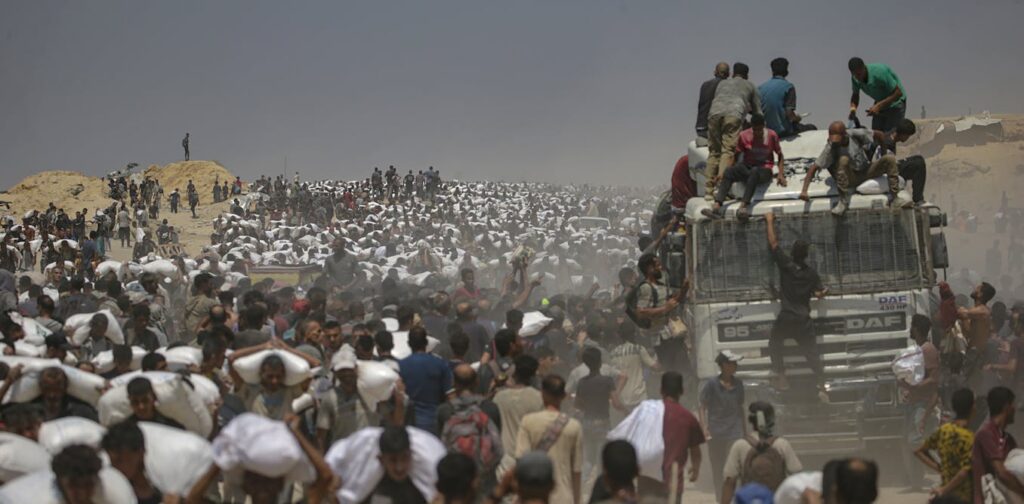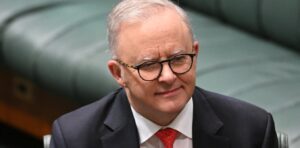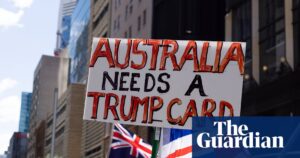
Keir Starmer, the UK Prime Minister, has declared that unless a ceasefire is achieved and a peace process leading to a two-state solution is initiated, Britain will recognize the state of Palestine at the United Nations in September. This announcement echoes a similar, albeit unconditional, pledge from French President Emmanuel Macron. Both leaders are responding to what Starmer described as the “intolerable situation” in Gaza.
In Scotland, former US President Donald Trump has also voiced concerns over the humanitarian catastrophe unfolding in Gaza, stating, “We’ve got to get the kids fed.” Despite these international calls for action, the question remains whether such political pressure will influence Israeli Prime Minister Benjamin Netanyahu’s military strategy. The answer, as many analysts suggest, is doubtful.
International Reactions and US Influence
Trump, who has maintained a close relationship with Netanyahu, appears to still trust the Israeli leader to address the humanitarian needs in Gaza. As long as the US administration backs Netanyahu, the Israeli Prime Minister is likely to continue his current course with minimal constraints. The international outcry over the food crisis in Gaza has prompted some changes, but these have been largely symbolic.
Israel, along with the United Arab Emirates, has conducted air drops of aid and implemented “tactical” or “humanitarian” pauses in certain areas of the Gaza Strip to facilitate aid delivery. However, these measures are seen as more of a public relations effort than a substantial solution, given the limited amount of aid actually reaching those in need.
The Escalating Crisis in Gaza
The current phase of the conflict began in mid-March when the Israeli government blocked all aid to Gaza. This blockade lasted two months before some shipments were allowed. Recently, an average of about 70 trucks a day have crossed the border, far short of the 500-600 trucks needed daily to sustain the 2 million residents of Gaza.
Since May, over 1,000 Palestinians have been killed, mostly shot, while attempting to access food at one of the four overcrowded distribution sites managed by the US-backed Gaza Humanitarian Foundation (GHF). Previously, UN agencies operated 400 distribution points across the territory.
“More than 1,000 Palestinians have been killed since May while trying to get food.”
Military Strategies and Their Impact
Despite the daily pauses in some areas, fighting continues in much of the Gaza Strip. There is little indication that Netanyahu’s government is seeking a swift end to the conflict. From Israel’s perspective, peace can only be achieved once all hostages are returned and Hamas is dismantled. However, Hamas has proven more resilient than anticipated, surviving despite the intense military pressure from Israel.
The Israeli military often employs the “Dahiya doctrine,” a strategy focused on targeting civilian infrastructure to undermine insurgent support. This approach, developed during the 1982 conflict with Hezbollah in Beirut, has been applied extensively in Gaza, yet Hamas remains entrenched.
“Hamas has already replaced its thousands of casualties with new recruits.” – Major-General Itzhak Brik
Prospects for Peace
Israel’s demands for Hamas to surrender and disarm, followed by exile, are unlikely to be met. Hamas fears that even if it complies, Gaza would be forcibly cleared and resettled, while the West Bank would see a surge in settlers. This scenario would render a two-state solution unattainable, solidifying Israel’s position as a regional superpower.
While external political pressure is mounting, with potential formal recognition of Palestine by the UK and France, the conditions for peace remain challenging. Macron’s vision of a “demilitarised Palestine” and Starmer’s call for Hamas to disarm are seen as non-starters.
Without full backing from the US, any diplomatic efforts may prove ineffective. Economic and social sanctions are unlikely to have a significant impact due to the support Israel receives from various states and organizations.
Potential Pathways to Resolution
Two possible routes to a settlement exist. One is that Trump could be motivated to push Netanyahu towards negotiations, although this is improbable unless Trump’s reputation is at stake. The influence of the Israel lobby in the US, particularly among Christian Zionists, remains formidable.
The other possibility is if the conflict becomes untenable for the Israeli military. Should more IDF leaders recognize the unwinnable nature of the war, this might prompt a shift towards a negotiated settlement.
As the situation continues to evolve, the international community watches closely, hoping for a breakthrough that could lead to lasting peace in the region.





